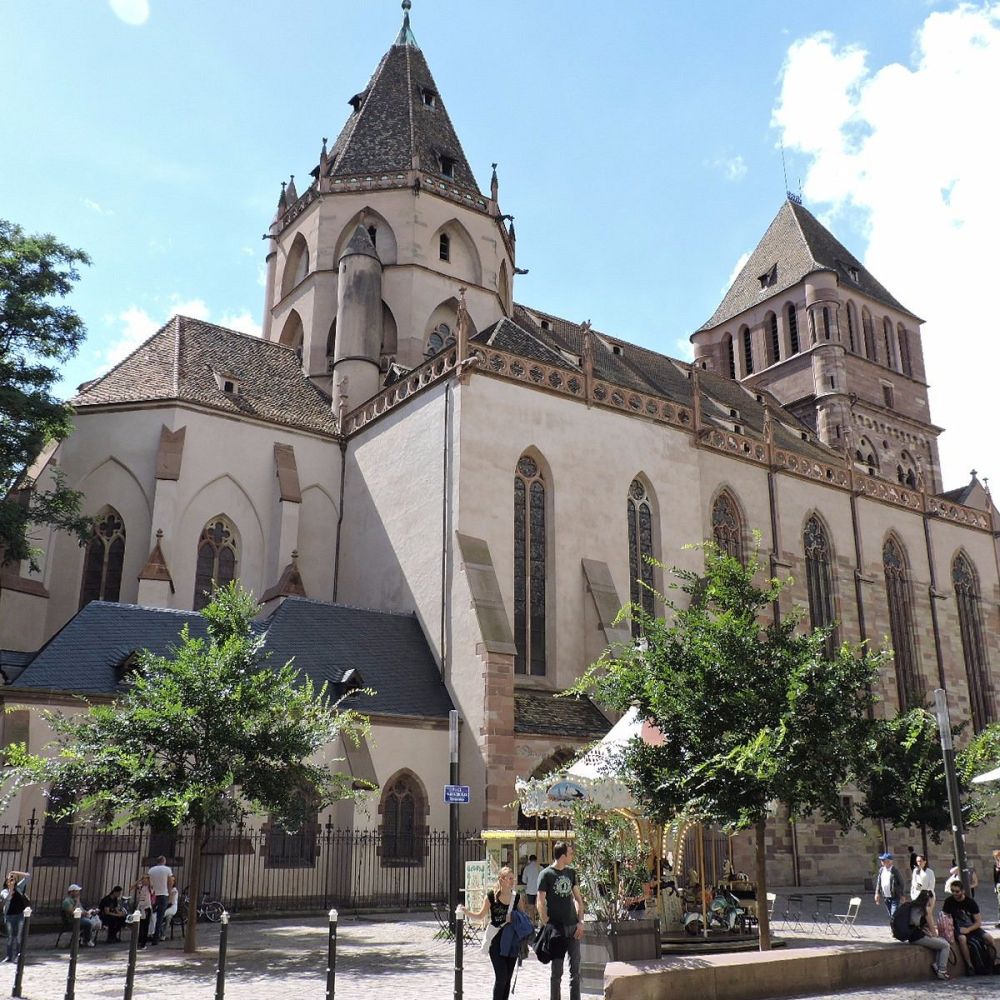

Built on the cusp of the late medieval times and early Renaissance, the Church of Saint Thomas stands as an illustrious historical landmark in Strasbourg, France. This primarily Gothic-style church, also known as Thomaskirche, has its root steeped in history dating back to the early 6th century, although the current building was constructed between the 12th and the 15th centuries. It is often referred to as the 'Protestant Cathedral' or ‘Old Lady’ and is renowned for its role in the Protestant Reformation.
Tourism in Strasbourg has always had a strong historical and cultural component, with the Church of Saint Thomas being a pivotal historical attraction. The church has attracted visitors from all over the world due to its significant religious history, impressive architecture, and the artistic treasures it houses. Notably, it is the final resting place of Martin Bucer, a prominent Protestant reformer, which adds to its significance among Protestant visitors.
During the 18th and 19th centuries, as travel became more accessible, the Church of Saint Thomas saw an increased number of tourists who were drawn to its mixture of architectural styles, the unique Silbermann organ, and the stunning frescoes and tombs it encompassed.
The church's blend of Romanesque and Gothic architectural styles, particularly the impressive five-naved structure and the lofty towers, has long been a draw for those interested in religious architecture. The exquisite Silbermann organ, dating from the 18th century, continues to be a magnet for music lovers and is still used for regular concerts, enhancing the church's status as a tourist destination.
Art enthusiasts are often drawn to the Church of Saint Thomas for its outstanding collection of works, especially the famous tomb of Marshall Maurice de Saxe which is a masterpiece of rococo funerary art by Jean-Baptiste Pigalle. In addition, various frescoes and stained glass windows contribute to the church’s artistic allure.
In recent years, tourism at Church of Saint Thomas has seen a growing trend towards interactive and immersive experiences. The integration of modern technology for guided tours and the development of virtual reality experiences have enabled visitors to engage with the church's history and art in innovative ways.
Furthermore, there has been a rise in thematic tourism whereby visitors are keen to explore the church's role in the Reformation, understand its impact on European history, and its connection to notable historical figures.
Eco-tourism is also influencing how people visit attractions, with a focus on sustainable travel. Strasbourg, and by extension, the Church of Saint Thomas, have become popular among those looking to reduce their carbon footprint while still immersing themselves in the region's rich heritage.
Today, the Church of Saint Thomas continues to be an important part of Strasbourg’s appeal to tourists. Whether driven by religious, architectural, or historical interests, or the desire to experience the charm of Strasbourg's old town, visitors to the Church of Saint Thomas leave with a deeper appreciation for the city's multifaceted history and cultural vibrancy.